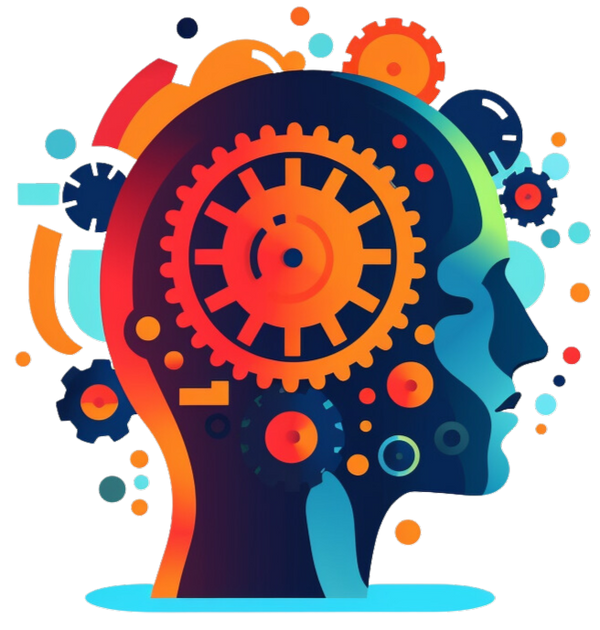
ADHD diagnosis and support for children: A clear roadmap for parents
Share
ADHD is not a disease, but a different way of thinking. The key is to support your child in a targeted way, rather than "adapting" them. Here's how to do that.
A diagnosis of attention deficit hyperactivity disorder (ADHD) or neurodiversity can be both a relief and a challenge for parents. It's crucial to provide targeted support to the child by encouraging their individual strengths. Furthermore, strategies for independently overcoming their challenges should be taught, rather than "rounding off" and "adapting" the child. This guide shows you how to proceed.
1. Understand and classify the diagnosis
Early diagnosis facilitates targeted support . Late detection can lead to comorbidities such as anxiety disorders or depression . Diagnosis is performed by child and adolescent psychiatrists and specialized psychologists. Key procedures include:
- Anamnesis interviews with parents and teachers
- Questionnaires for symptom assessment
- Behavioral observation in everyday life
- Exclusion of other causes (e.g. vision or hearing problems)

2. Multimodal support instead of rigid therapy
ADHD is not a disease, but a particular way of thinking – comparable to a different operating system of the brain that can promote creative problem-solving and unconventional thinking . The goal is therefore not "normalization," but rather the promotion and utilization of talents – and the constructive, peaceful handling of "problems." Key building blocks are:
- Psychoeducation : Knowledge conveys acceptance
- Behavioral therapy & coaching : developing everyday strategies
- Parent coaching & teacher training : Raising awareness
- Drug treatment: If necessary, often for moderate/severe ADHD
- Treatment of concomitant diseases: e.g. anxiety disorder/depression
3. Psychoeducation: Understanding instead of despair
Understanding ADHD is the first step towards an easier and more pleasant everyday life for everyone involved.
Goals:
- Acceptance of your own ADHD mindset
- Recognizing individual ADHD strengths
- Reduction of ADHD-typical self-doubt
Who should be informed?
- The child itself : In order not to feel "wrong"
- Parents and siblings : To avoid misunderstandings
- Teachers : To make the school day suitable for the child

4. Types of therapy: What options are available?
Every child has different needs. The choice of interventions is therefore based on individual needs. The most common approaches are:
4.1 Behavioral therapy
- Developing helpful routines
- Improve impulse control
- Recognizing and changing problematic behavior
4.2 Occupational therapy
- Improvement of fine motor skills
- Concentration and perception training
- Strengthening self-regulation
- Promote social and emotional skills
- Special support for additional needs
4.4 Neurofeedback
- Training for better brain activation
- Improve concentration and impulse control
4.5 Parent coaching
- Adapting parenting style
- Reduction of family stress
- Conflict resolution
4.6 Coaching for children and young people
- Improve self-organization
- Mastering school challenges
- Strengthen self-confidence

5. Self-reflection: Understanding your own ADHD
Children with ADHD particularly benefit from self-examination, as self-reflection allows them to recognize their individual strengths and develop appropriate coping strategies . They also enjoy learning through play , fearlessness, and step-by-step (so-called "iterative"). Incidentally, this is probably the best approach for neurotypical children as well.
Useful questions for the child:
- When am I most focused?
- Which strategies really help me?
- What major challenges do I often face?
6. Medication: Useful or not?
Medication can help, but is not a requirement. It is especially recommended when the child is severely impaired in everyday life and other measures are insufficient to improve concentration, impulse control, or emotional regulation . In these cases, it can significantly reduce the suffering of the child affected by ADHD.
Severity of ADHD:
- Easy : Behavioral Therapy & Coaching
- Means : Possible combination of therapy & medication. Or one of both
- Severe : Medication usually necessary, additional measures required
Commonly used medications:
- Stimulants (methylphenidate, amphetamines)
- Non-stimulants (atomoxetine, guanfacine)
The medication should always be monitored by a specialist, as should the dosage, which can be adjusted up or down as needed.

7. Comorbidities: ADHD rarely occurs alone
ADHD often co-occurs with other disorders – as many as 60–80% of those affected have at least one other co-morbid mental health condition . The most common co-morbidities include:
- Anxiety disorders
- Depression
- Tic disorders
- Sleep problems
Holistic treatment is therefore essential. Medications don't solve problems; they alleviate symptoms.
8. Conclusion: See ADHD as an opportunity
ADHD is not a disease, but a particular way of thinking, feeling, and acting. The right support not only helps overcome challenges, but also enables the child with ADHD to develop any potential that may be dormant .
Key points:
- Acceptance and understanding come first
- Individual measures are crucial
- A supportive environment makes the difference
Children with ADHD can lead fulfilling and successful lives – if they receive the right support.

9. Frequently Asked Questions (FAQ)
1. Can ADHD change in adulthood?
Yes, symptoms can change over the course of life. While impulsivity and hyperactivity often decrease, challenges with organization and concentration often remain . Why are adults with ADHD often less wild or unfocused? It's because they (out of necessity) had to learn to adapt. However, this requires considerable energy expenditure and even chronic stress.
2. Are there special support measures for ADHD children at school?
Yes, many schools offer accommodations for disadvantages, such as extended processing times, structured daily schedules, or alternative testing formats. School psychologists and special education teachers (male and female, of course) are also available. Close collaboration with teachers is important. Parents bear a crucial responsibility in this. They represent the family system in which their child grows up.
3. How can parents best support their ADHD child in everyday life?
Through clear routines, understanding communication, and the creation of a low-stimulation, structured learning environment, as well as sufficient stimulation/rest breaks (alternating) throughout the day , patience and positive reinforcement help build the child's self-confidence. The most important ingredient is LOVE , which is unconditional. Also, boundaries that the child understands and respects (because they are enforced consistently enough).
